Ashes: The winners and losers from the 2017-18 series
- Published
- comments
Pint-sized Ashes: Ill Root returns but can't stop defeat
The Ashes have been won, Australia have lifted the urn in Sydney and England have once again had a miserable trip down under.
There are, though, other prizes to be dished out.
Before we start, it's taken as a given that Steve Smith is player of the series, the Australian of the year and Time magazine's man of the decade.
Here are BBC Sport's winners and losers of the 2017-18 Ashes series.
Moment of the series
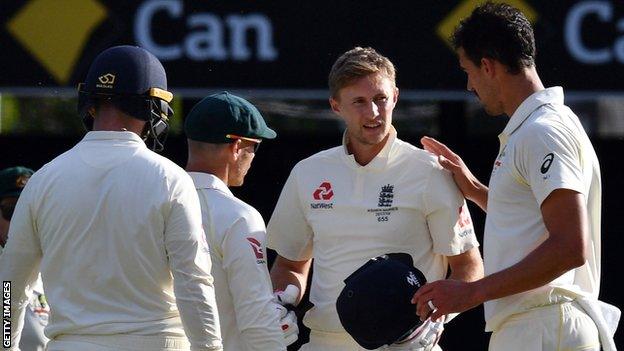
Australia fast bowler Mitchell Starc hit England captain Joe Root on the helmet during a thrilling third evening at Brisbane
It may be that this series is more remembered for the moment of trouble involving Ben Stokes outside a Bristol nightclub than anything that happened on the pitch.
Of the action, substitute Peter Handscomb's wonderful diving catch to remove Dawid Malan in Perth, prompting a collapse of six wickets for 35 runs, can be pinpointed with hindsight as when England's hope of retaining the Ashes drained away.
But the most exhilarating, must-watch, hairs-on-the-back-of-the-neck period of play came on the third evening of the first Test in Brisbane, when Australia's fast bowlers showed their teeth for the first time.
Mark Stoneman and Joe Root were given a torrid time, with Root taking a horrific blow to the grille from Mitchell Starc. The sight of Australian pacemen tearing in in front of a baying, raucous and partisan Gabba ground evoked memories of the Mitchell Johnson-inspired carnage of four years ago.
The drama never quite reached those heights again but, for an hour or so, it was what Ashes cricket in Australia is supposed to be.
Ball of the century
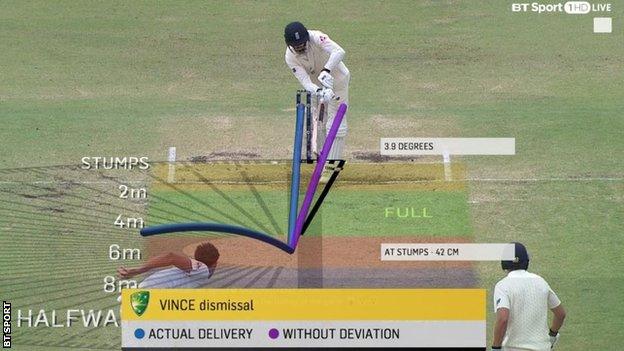
The delivery that dismissed James Vince would have gone down the leg side had it continued on its natural path
Shane Warne bowled the ball of the last century, but it could be that Starc has delivered the ball of this one.
In England's second innings of third Test, left-armer Starc, bowling round the wicket, almost defied physics to remove James Vince's off stump.
Admittedly, it hit a crack, but Starc can be given credit if that is what he was aiming to do. If the ball had not straightened after pitching, it would have missed leg stump. To hit the top of off was a 42cm deviation.
Vince, who had been batting beautifully, was befuddled. In one delivery, the gap between the two sides was perfectly illustrated.
Breakthrough performance

Dawid Malan scored his maiden Test century at Perth and ended as England's top runscorer, with 383
Before the series began, England's biggest concern was the number of inexperienced players in their squad and, specifically, the greenness of three of their top five.
If the jury is still out on Vince and Stoneman, the tourists have certainly found a batsman in Malan.
The Middlesex left-hander had a wobbly introduction to Test cricket in the home summer, but has grown in stature at the crease with calmness, bravery and an off-drive you could take home to meet your parents.
The highlight was an emotional maiden Test century in Perth which, added to three half-centuries, made him England's highest runscorer of the series.
Malan could end up as England's next number three. His occasional leg-spin is useful, too.
Biggest disappointment
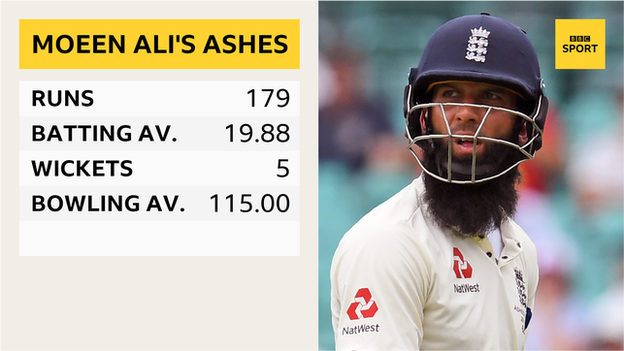
Moeen Ali was one of several senior England players to struggle in Australia
While we will always wonder what impact Stokes - perhaps at the peak of his powers - may have had on the series, it's reasonable to think even he would not have reversed a 4-0 margin.
The bigger pity is the collective failure of most of England's senior players, some of whom arrived down under with legitimate claims to be the best in the world at what they do, but have failed to make a telling impact when it matters most.
Root has carried himself impressively, yet his runscoring has been dwarfed by opposite number Smith.
Alastair Cook ground out an epic double century in Melbourne, but it was too late to alter the direction of the urn. His next highest score was 39. Wicketkeeper Jonny Bairstow's century in Perth was the only time he passed 50.
Stuart Broad and Chris Woakes have both taken their wickets at almost 50 apiece, while Moeen Ali's awful tour with bat and ball has left him clinging to his place in the side.
Ironman award
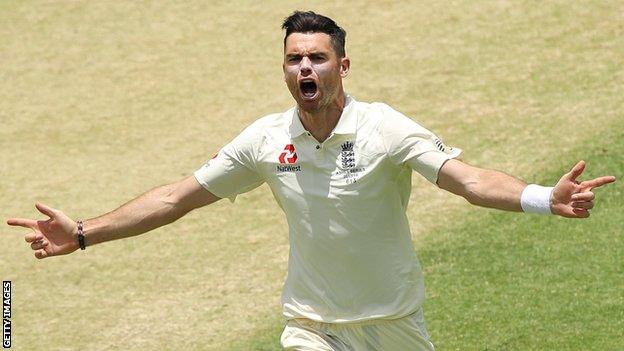
James Anderson was England's leading wicket-taker, finishing with 17 at an average of 27.82
Whenever Australia were batting (and, thanks to Smith, that was pretty much all the time), it seemed as though James Anderson was bowling.
The 223.3 overs he sent down were the most in a series in his career and the third-biggest workload of any pace bowler this century.
On a tour where, at all venues except Adelaide, England were begging the ball to move, Anderson was head and shoulders above the rest of the attack because of his skill, accuracy and age-defying stamina.
At 35, England's all-time leading Test wicket-taker is as good as ever and, thankfully for them, is targeting the home Ashes in 2019. They should be very worried about the day he retires.
Golden Lawnmower for biggest groundsman's gaffe

The start of play was delayed on day five at Perth as groundstaff tried to dry the pitch with leaf blowers
This isn't an award you can hand out every series, but this Ashes has provided more groundsman-related controversy than most.
The MCG was chastised for its lifeless pitch by the International Cricket Council, while Moeen was given out stumped in Brisbane in part because the painter of the crease couldn't manage a straight line.
However, both of those were trumped in Perth, where some unsecure covers jeopardised Australia's push to regain the urn.
When the covers blew away, overnight rain left wet patches on a length and resulted in one of the most bizarre sights ever seen in Test cricket. In bright sunshine, the only action was half a dozen groundstaff drying the track with leaf blowers.
All was well in the end, but, for a while, there was the prospect of England escaping with a draw.
Forgotten man
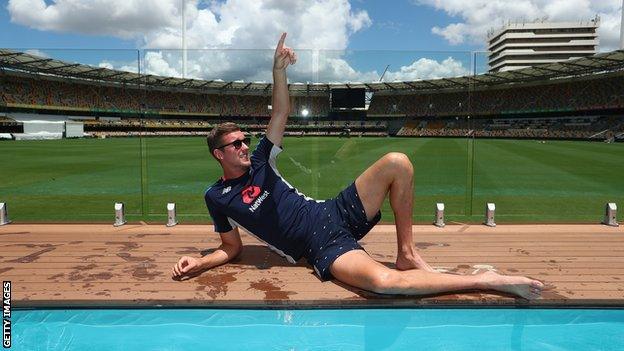
Jake Ball was dropped for the second Test at Adelaide in favour of Craig Overton
Gary Ballance and Ben Foakes are the only members of England's touring party to not play in a Test and, in Ballance's case, his drinks-carrying might not have been of a sufficient standard to get him on the tour of New Zealand.
For Australia, Handscomb was dropped after Adelaide, while Chadd Sayers, in the squad for the first two Tests, was asked before the second if he thought he would play. "No," was the reply.
However, to be truly forgotten, you first have to be remembered.
England were desperate for Jake Ball to recover from an ankle injury in time to play in the first Test, with the coaching staff saying he had long been identified as a bowler suited to Australian conditions.
He returned 1-115 and was only seen again as a substitute fielder. He was even overlooked for Tom Curran, a man who was the replacement of a replacement, for the final two Tests.
Most endorsed

Ben Duckett was suspended for pouring a drink over James Anderson on England's return to The Avenue in Perth
Some companies pay millions and millions of pounds to be mentioned in the same breath as a sporting event as big as the Ashes.
The Avenue nightclub in Perth did not cough up a bean (we think) and got more mentions than a sponsor could ever afford.
It was there where Bairstow 'headbutted' Cameron Bancroft, an incident which resulted in England being placed under a curfew.
Incredibly, on the first night that the curfew was lifted, they went back to the same place and Lions batsman Ben Duckett poured a drink over Anderson. You couldn't make it up.
The result is the Avenue becoming perhaps the most famous nightspot in the history of Ashes cricket. The Times even wrote a review of the place. , external
Strangest moment
What really happened between Bancroft & Bairstow?
Moeen cuddling a koala was pretty standard for an England cricketer in Australia, Trevor Bayliss getting the ice creams in for his staff during a warm-up game was amusing, while the Anderson 'ball-tampering' controversy in Melbourne was a storm so small it couldn't fill a teacup.
However, by far the most surreal experience was Bancroft's explanation of the Bairstow headbutt after the first Test in Brisbane.
"He just greeted me with a headbutt. I was expecting a handshake," he said.
"He didn't knock me over. I've actually got the heaviest head in the Western Australia squad. There's an actual measurement for it."
Then, from a journalist: "Can you define, perhaps on a 1-10 basis, the difference between what happened to you and a headbutt?"
The reply...
"He connected with my head with a force that made me think 'wow, that's a bit weird'."
As Bancroft struggled to explain where Bairstow made contact, Smith had to intervene to tell the young opener that he was pointing to his forehead.
It really has been a strange series.
- Published8 January 2018
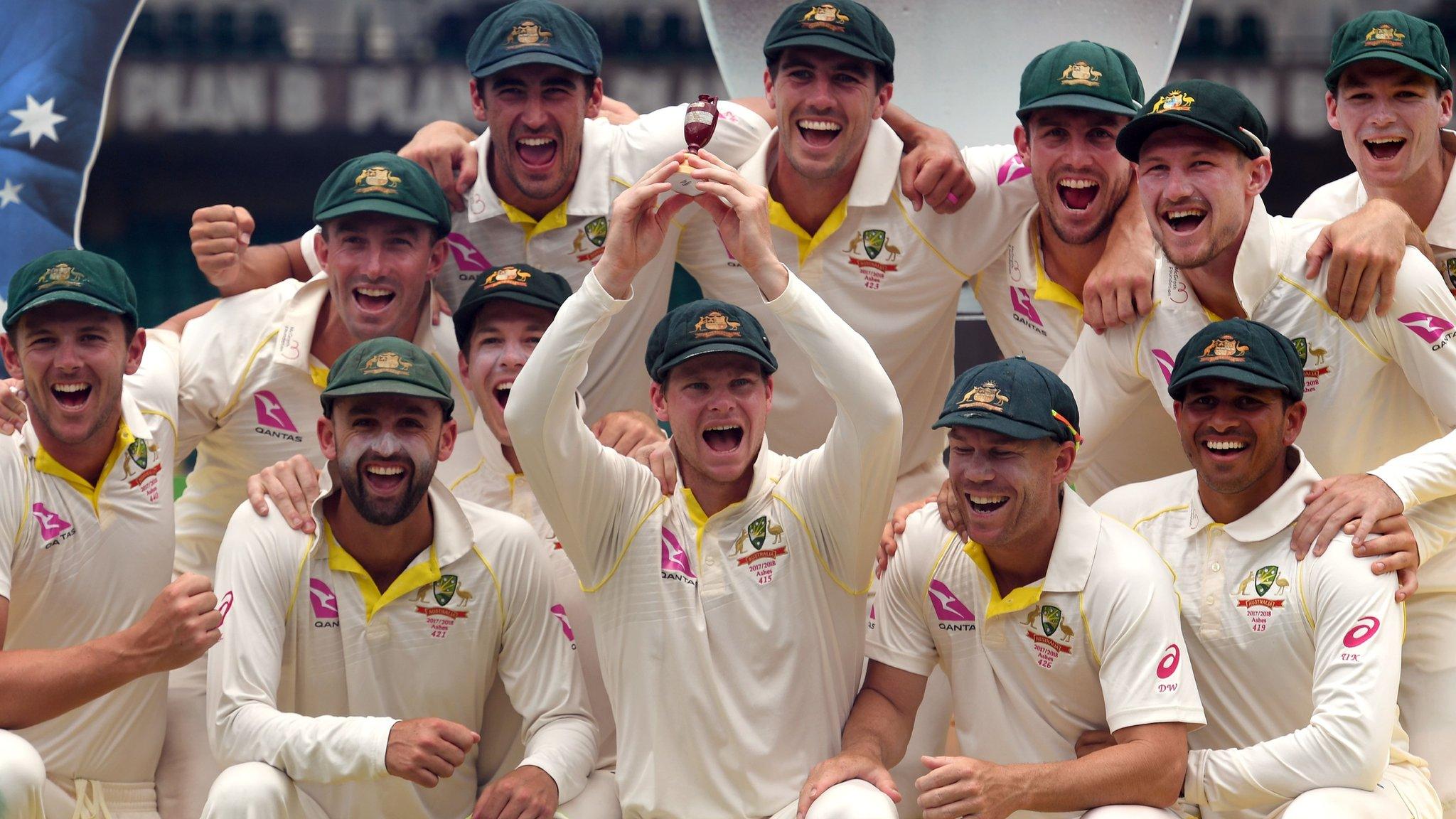
- Published8 January 2018
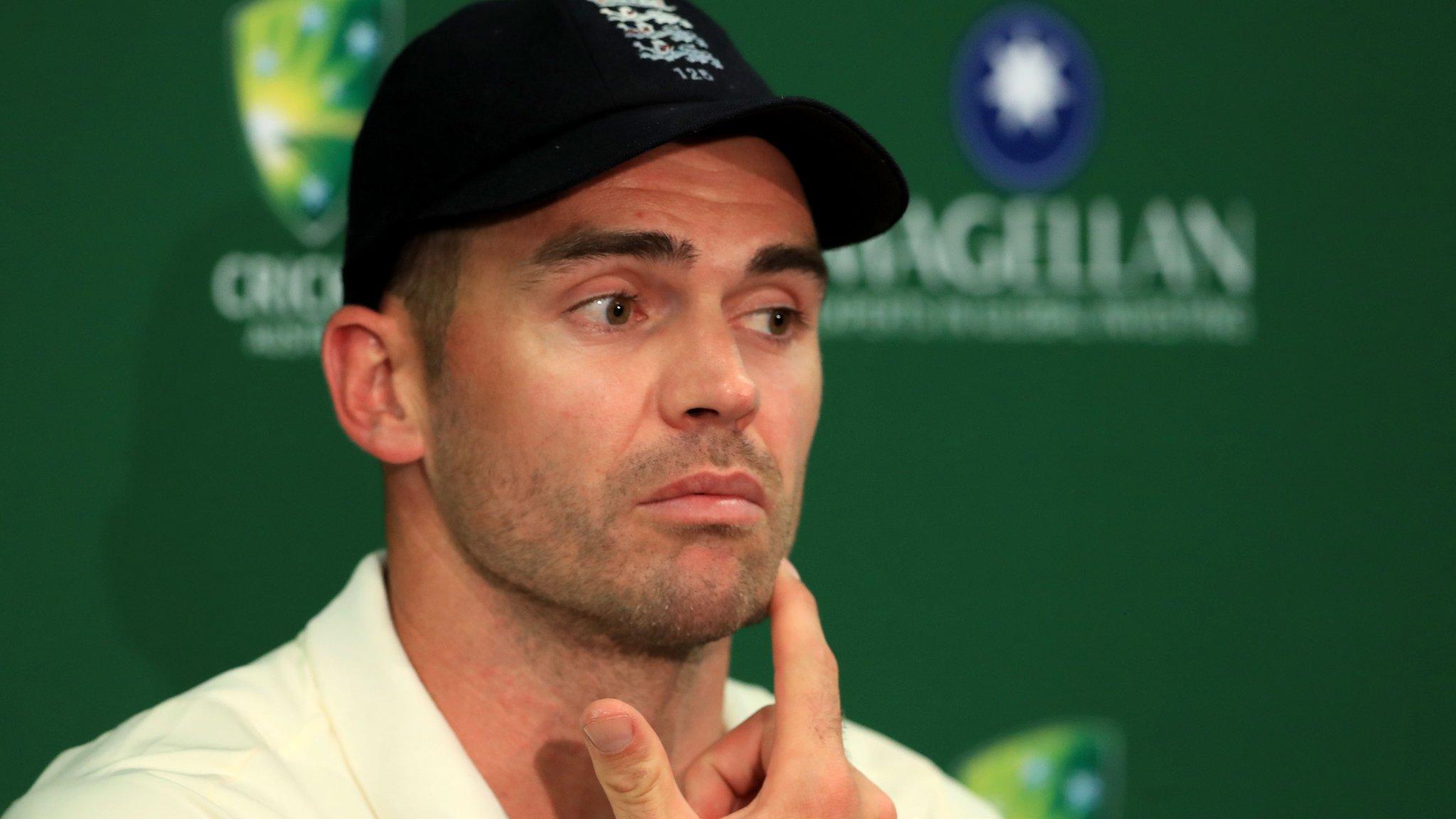
- Published8 January 2018
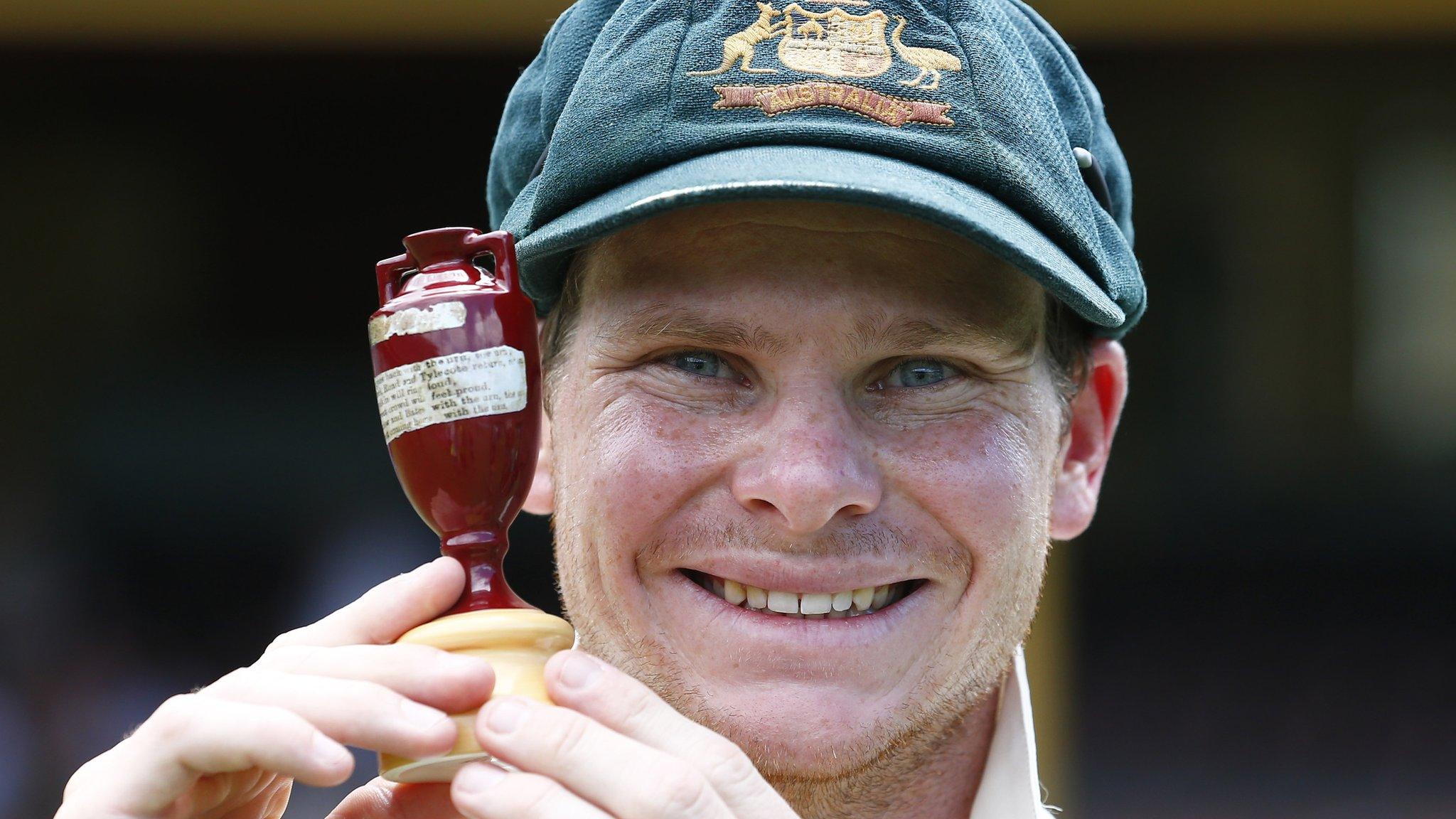
- Published8 January 2018
